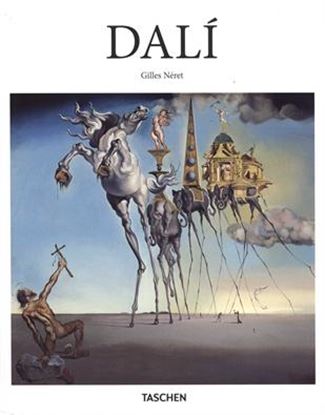

DALI (BA-ART)
Pintor, escultor, escritor, cineasta y un auténtico showman, Salvador Dalí (1904-1989) fue uno de los personajes más exhibicionistas y excéntricos del siglo xx. Pionero en introducir en el arte las ideas del psicoanálisis freudiano, es célebre en particular por sus prácticas surrealistas, con ideas tales como los relojes blandos o el teléfono langosta, que se han convertido en iconos del movimiento surrealista y del arte moderno en general.
Dalí solía describir sus cuadros como «fotografías de sueños pintadas a mano». La precisa representación de elementos estrambóticos y su disposición incongruente crean una incitante tensión e interés. El mismo Dalí explicó que pintaba con «el afán de la precisión más imperialista», pero solo «para sistematizar la confusión y contribuir al descrédito total del mundo de la realidad».
Con su peculiar bigote revolucionó el papel del artista representando a un personaje polémico en la esfera pública y creando obras que, además de contemplarse en las paredes de las galerías, podían consumirse en el ámbito de las artes gráficas, la moda, la publicidad, la escritura y el cine.
Este libro descubre las pinturas y la personalidad de Dalí, mostrando no solo su destreza técnica sino también sus composiciones provocadoras y sus temas estimulantes, como la muerte, la decadencia y el erotismo.
1,350
LA OTRA HISTORIA DEL CINE
Con su zafarrancho de trenes, lunas tuertas y tartas voladoras, el cine llegó como principal testigo de un escandaloso, emocionante y terrible cambio de mundo: el paso del siglo XIX al XX, tiempo de juventud y hartazgo, de entusiasmo y profunda desesperanza. Entre esos telones, este nuevo invento terminaría por convertirse en el más compartido lenguaje de narración, embeleso y manipulación; una herramienta imprescindible con la que documentar y fabricar esa época distinta a todas las demás, en la que la historia empezó a avanzar cada vez más rápido, sin casi un minuto ya para pensar en sí misma ni recoger sus cosas. Por supuesto, nada de eso sucedió en silencio. Este libro recoge, desde sus orígenes hasta nuestros días, la historia de la música del cine: una relación simbiótica y fascinante que transformó y enriqueció por igual a estas dos disciplinas artísticas en su camino compartido hacia la modernidad.
1,300
VERDAD. NECESIDADES, ERRORES Y PERSONA
Todos actores y personajes así como las personas en general tenemos una persona pública con la que nos presentamos ante los demás, una necesidad insatisfecha encubierta bajo esa máscara y cometemos un error trágico cuando reaccionamos ante un choque entre lo queremos que se piense de nosotros y lo que realmente somos. Sobre estos tres elementos clave Susan Batson ha desarrollado un proceso de técnica actoral que han seguido estrellas de la talla de Nicole Kidman, Tom Cruise, Bradley Cooper o Juliette Binoche. En Verdad, un clásico desde su publicación en 2007, expone didácticamente ante un círculo de alumnos imaginarios (pero en los que no cuesta reconocer actitudes y personalidades frecuentes en el mundo de la interpretación), los múltiples recursos que un actor o actriz debe explorar y aprovechar «para que un personaje esté vivo».
1,300











